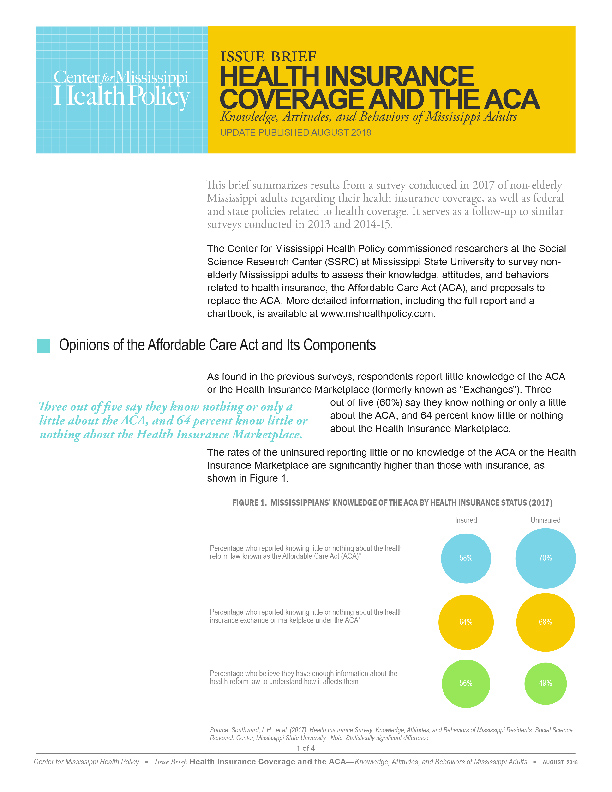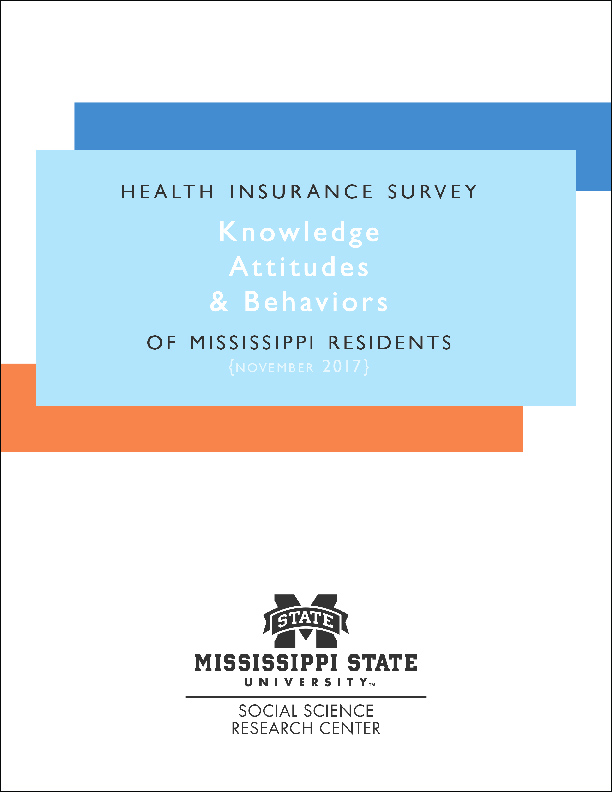Tuesday, September 24th, 2019
How the Medical Loss Ratio Impacts Mississippi
by Zach Smith
The Medical Loss Ratio (MLR) provision, an often-forgotten part of the Affordable Care Act behind more well-known provisions, such as individuals being allowed access to insurance with a pre-existing condition or individuals being allowed to stay on their parent’s insurance plan until age 26, may have more impact in 2019 than prior years. The MLR provision requires insurance companies that cover individuals and small businesses to spend at least 80% (85% in large group plans) of their income gained from premiums on health care claims and quality improvement. This is significant because it limits to 20% the amount of premium funds insurers can use for administration costs, marketing, and what can be counted as profits. Another component of the MLR provision requires insurers that fail to meet the MLR requirements (i.e. charge too much for premiums relative to expenditure on health care claims) to rebate consumers the overage as an offset to premium costs. It has been estimated that insurers will pay out a total of at least $1.3 billion across all markets nationwide in 2019, and approximately $35 million in Mississippi across all markets. This topic is particularly timely because insurers have until September 30th of 2019 to begin issuing rebates.
Proponents of the MLR provision claim that setting limits on insurance companies holds them accountable by helping to control premium costs and ensuring that individuals and businesses are getting adequate services for their money. Opponents of the MLR provision claim that it injects an element of unpredictability into the insurance market and would lead to unsustainable losses for insurers. Indeed, when MLRs reach around 90%, or more, it is unlikely insurers will be able to remain profitable and continue to provide coverage sustainably because insurers are paying out more of their premium income on claims and not able to properly administer their plans. MLR rebates are based on a 3-year average, so 2019 rebates would be calculated based on financial data from 2016, 2017, and 2018. For those with employer coverage, the rebate may be shared between the employer and the employee.
In the early years of the ACA insurer MLRs in the individual market ranged between 98% (2014) and 103% (2015). Much of the high MLR percentages has been attributed to the seismic changes to the insurance market, including but certainly not limited to: insurers had very little historical information and data to set their premiums – especially in the individual market, and late regulatory decisions – such as keeping some non-compliant plans. At the time, with such high MLRs insurers were going to struggle to stay profitable and provide sustainable coverage which made MLR a controversial policy provision in the early years of the ACA.
However, recent data indicates that insurers may be doing better than ever under the ACA, primarily due to premium increases meant to offset profit loss in the difficult years of early-ACA implementation. Recent data compiled indicates that most insurance companies were highly profitable in 2018 and may have raised premiums too much to compensate for losses, particularly in the individual market. Research also indicates further market correction on the part of insurers in 2019 to lower premiums, particularly in the individual market, to adjust for premium increases in 2018. Despite losses in 2016 and 2017, it has been estimated that insurers will pay out a total of at least $1.3 billion across all markets nationwide, and approximately $35 million in Mississippi across all markets. These rebates are the result of the MLR policy, and prior to the ACA insurers would have collected these funds as profit. It has been suggested by researchers that the market is more stable and sustainable due to the premium adjustments and rebates.
*Note: Estimates made by the Henry J. Kaiser Family Foundation are calculated using information reported by insurers to the Centers for Medicare and Medicaid Services. Data Note: 2019 Medical Loss Ratio Rebates
As estimated by the Henry J. Kaiser Family Foundation, rebates varied substantially by state with Virginia insurers paying the highest total rebates ($149.6 million) and insurers in thirteen states paying $0. In the individual market, Mississippians will be rebated an estimated $32.6 million. Some of the highest rebates are estimated to be paid in Pennsylvania ($990 per subscriber), Virginia ($770), and Minnesota ($670). In the case of employer-sponsored plans, the cost of coverage is often split between the employer and employee and can take different forms depending on the plan’s contract and the way the policy holder and participant share premium costs. Mississippi’s large group market rebates are estimated to be $2.4 million and $0 for small group plans. Most rebates to be paid out in Mississippi ($32.6 of $35.1 million) will be in the individual market amounting to $500 per individual with a qualifying plan. There are approximately 66,000 individuals in Mississippi with a qualifying plan.
Rebates may be paid either in the form of a premium credit or in a lump-sum payment. Most insurers have indicated that they will pay out rebates in the form of a lump sum, which could be as simple as receiving a check in the mail. Of note, insurers also report the amount that has gone unclaimed in previous years, which as of last year was $71.3 million across all three commercial markets. Rebates as a part of MLR policy, whether in a lump sum or as a premium credit, were intended to lower premium costs, increase transparency, and help individuals and groups adjust to fluctuation in premium costs to create a more stable market.




